Mayan ruins of Coba
Location and History of Mayan ruins of Coba
Just 44 km from Tulum ruins (the only Mexican ruins on the beach), another Mayan settlement used to stand. Coba in English and Cobá in Spanish means ruffled waters in Maya because of a couple of lakes very close.
Due to the found pottery, we suppose that Coba was first settled betwen 100 BC to 100 AD which makes it one of the oldest settlements in the Yucatan peninsula. The biggest constructions and the hieroglyphs probably come from the 7th – 9th century.
Coba used to be a very important site with 50 000 to 70 000 inhabitants living in the area of more than 80 km². The town controlled water resources and trade, possibly having the control over the ports of Xel-há, Xcaret and Tulum until the Spaniards came in the 14th ct.
Coba was never completely lost as many explorers and scholars knew about it and some of them visited more times. Although it was never opened for wide public till the end of 1970’s when the proper road was opened from Cobá to Cancún.
Between 800 – 1 200 buildings are said to be in Coba out of which just very few have been uncovered to public now. You can see now just those ruins from which was removed clay and grass growing on them.
Nowadays the fact that Coba used to be extremely important in its era is proved by parts of the white stone and plaster roads called sacbe in Maya (sacbeob in plural). Some of them can be still found going from Coba up to 100 km. The sacbeob were made from the white limestone on purpose. At night, the moonlight illuminates the limestone roads so the Maya could follow the roads in the dark.
Now there are more than 1 200 people living in the village of Coba.
How to get to Coba
To visit this amazing archeological site in the jungle, you can take a trip with one of the travel agencies from Cancún, Tulum or Playa del Carmen. Or get there by car. Haven’t found any buses going there.
I took a tour from Playa del Carmen with Welcome Incoming Services and the same day after visiting Coba, we spent couple of hours in Tankah park.
There is an entrance fee. The toilets are just next to the ticket office, not inside the ruins and for a small fee, too. The refreshments can be purchased only outside the entrance.
You can walk the ruins, or hire a bicycle or a tricycle for 2 people with a guy cycling you around. We walked it.
But be ready for really hot weather with great humidity so you will be sweating like a pig. Take a hat/cap and a lot of water!
Do not wear flip flops or any sandals, unless you want to end up bleeding like me. The roads are full of stones and I was walking, taking photos with the right hand, writing notes on the phone with the left one, listening to the tour guide and looking at the beauty of the ruins in front of me and almost killed myself on a little stone. And then I had to spend 2 hours without a plaster in that dust and my finger bleeding. Ouch!
What to see in Coba
There are 4 groups of the ruins: the one on the right is called Macanxoc group, then more in the forest Nohoch Mul and on the way back on the second road (the one on the left) there are Chumuc Mul and Coba group.
There are two ballgame courts (juego de pelota in Spanish) in Coba where the famous game was played. Ask the guide to explain you how.
In the Coba group there is La Iglesia – The Church which with its 20 m is the second tallest pyramid of Coba. It is closed to public, so no climbing up this one.
The most famous ruin of Coba is its pyramid Nohoch Mul – 42 m high. Located in the Nohoch Mul group, 3 km from the entrance. The pyramid does look much higher in the middle of the jungle, surrounded just by the trees and some small ruins. It is still open to public unlike most of the pyramids in Mexico. To climb to the top you have to survive 120 big steps (each one looks like double step and they are not the same height.) Be very careful as there’s nothing to avoid you falling down at the sides of the pyramid.
I climbed the pyramid with that big toe still bleeding. I just had to. I didn’t even had to use the rope in the centre of the pyramid to help the people to climb up. Swearing to myself for having been too stubborn to take sport shoes and not the flip flops, I suddenly climbed the last step and when turned around, the view took my breath away. Just HUGE green jungle all around and white peaks of the pyramids.
Even if you would need an hour to climb Nohoch Mul, do it! It is a must. The pyramid is the highest one in the area so it will give you the best view ever. It was orgasmic!
On the way back pay a short visit to Templo de las Pinturas – the Temple of the Paintings where some colours can be still seen on the top of the pyramid.
Some lovely stelae can be observed along Coba. Stelae are tall sculpted stones, usually made of limestone, that Maya used for uncertain reason, probably as altars. The stelae are now placed where they were excavated and are covered with palapa roofs to protect them from the weather.
I fell in love with Coba. It reminds more Tikal in Guatemala than any other Mayan settlement in Mexico.
Have you ever heard of or visited Coba? Did you like it?
My trip to Coba was a press trip organized by Welcome Incoming Services and was done by superb funny tour guide Issis. Many thanks to them! However, all the opinions in the post are honest and just mine.
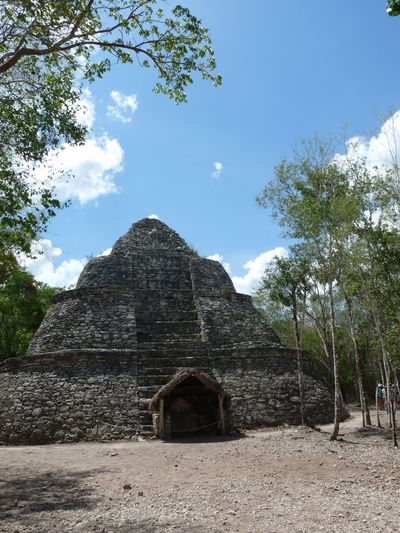
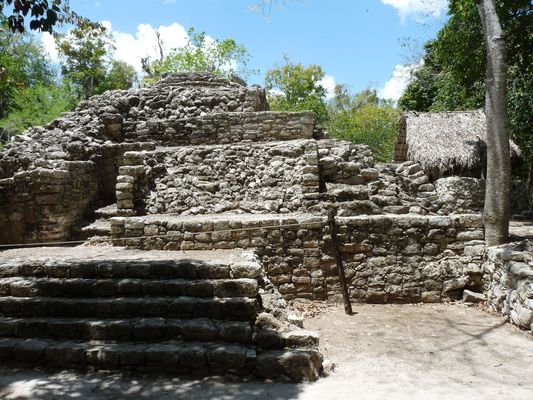
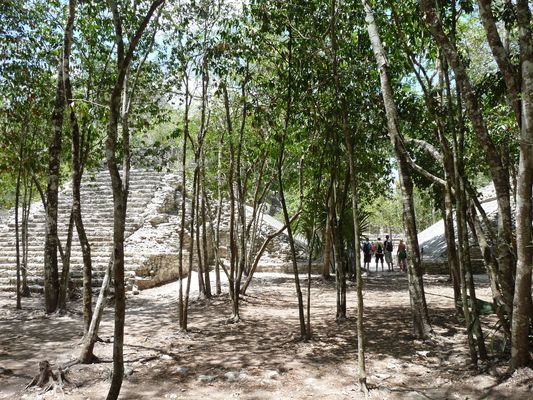
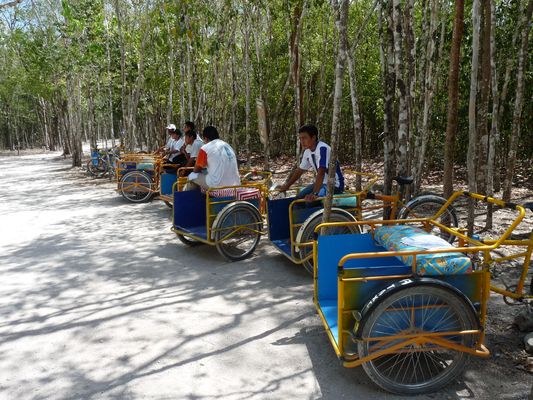
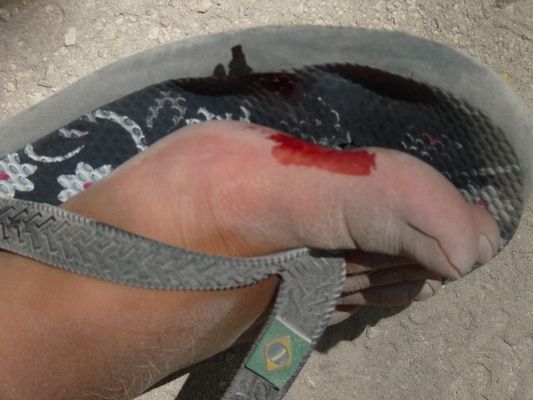
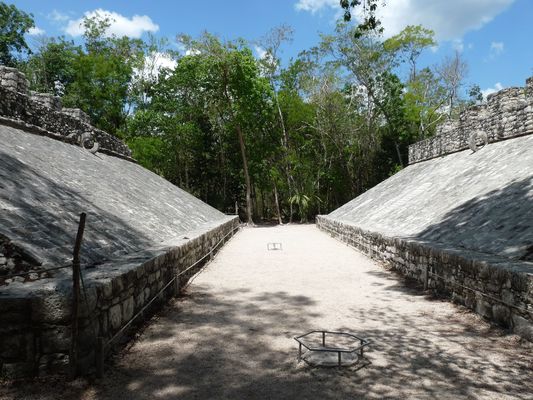

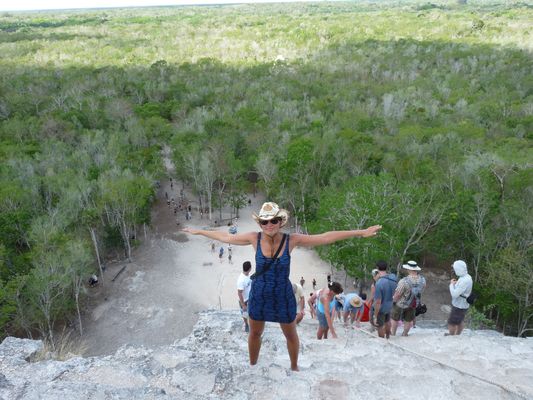
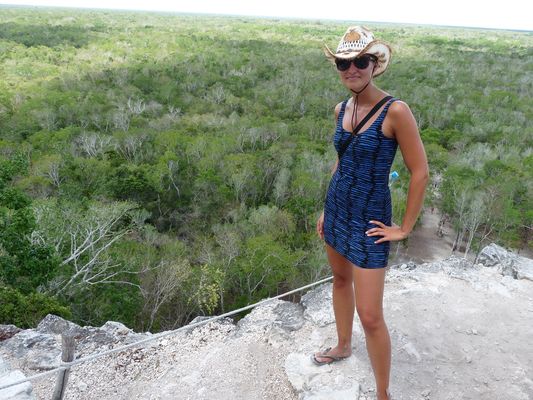
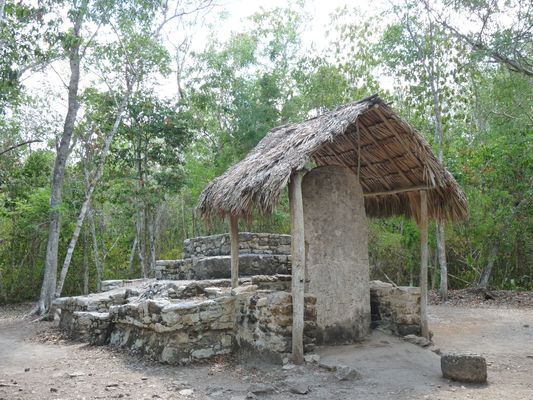
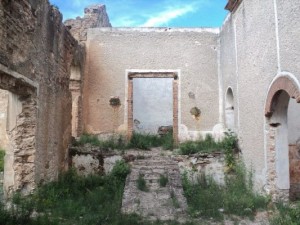

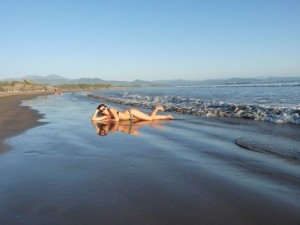
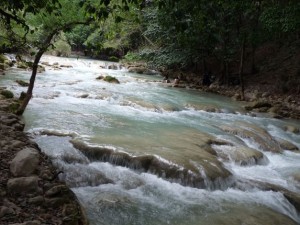
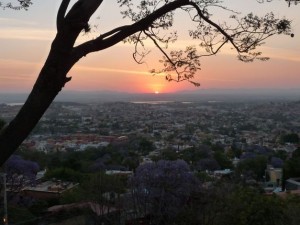

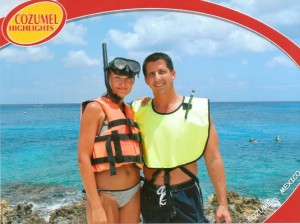
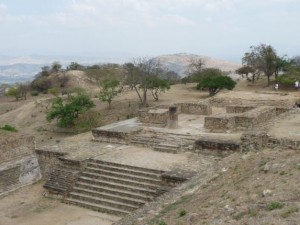
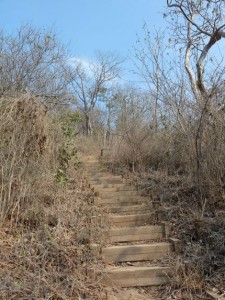
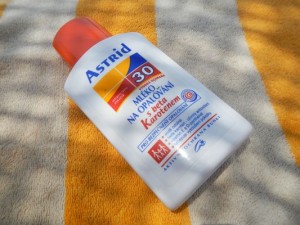
crazy sexy fun traveler
| #
Thanks! I loved it over there,a really nice place!
Sheril Benedict
| #
Great place but mysterious too .. I never heard about this place ,this is the firs time ..i like this post